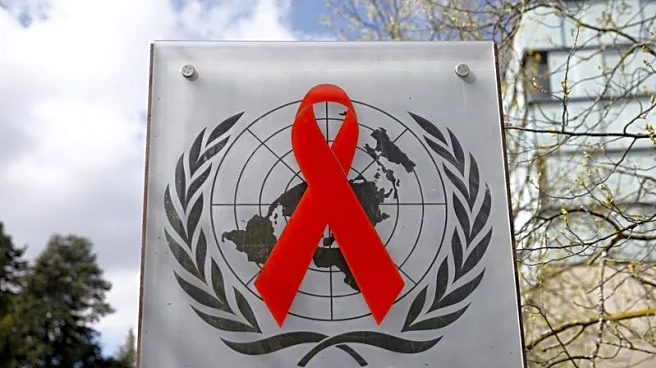What's Happening?
A recent study has examined the loss to follow-up (LTFU) rates among HIV patients who were excluded from the NAMSAL trial, a clinical study conducted in 2016. The study focused on patients with specific exclusions such as severe hepatic impairment, renal
failure, and psychiatric illness. It found that the LTFU rate was 50% at week 48 and increased to 60.5% by week 144. Factors such as being female and having a high baseline viral load were associated with a reduced risk of LTFU. The study also noted that employed individuals were more likely to be lost to follow-up, contrary to previous findings that linked unemployment with higher LTFU rates.
Why It's Important?
The findings of this study are significant as they highlight the challenges in retaining HIV patients in care, particularly those excluded from clinical trials. High LTFU rates can lead to treatment failure and increased transmission risks, undermining efforts to control HIV/AIDS. The study suggests that targeted interventions are needed to improve retention, especially during the first year of treatment. This is crucial for public health strategies aimed at achieving viral suppression and reducing HIV-related deaths. The study also raises ethical concerns about the follow-up care provided to patients excluded from clinical trials.
What's Next?
Future research should focus on developing interventions tailored to high-risk groups identified in the study, such as employed individuals and those with lower viral loads. There is a need for flexible service delivery models and enhanced counseling strategies to address the specific barriers faced by these patients. Additionally, improved tracking systems could help distinguish between true LTFU and silent transfers, providing a clearer understanding of patient movement within the healthcare system.
Beyond the Headlines
The study underscores an ethical dilemma in clinical trials, where excluded participants may not receive the same level of follow-up care as those included. This issue needs urgent attention to ensure equitable treatment and support for all individuals living with HIV. Addressing this gap could improve retention rates and overall health outcomes for excluded patients.















